Impacts of spacecraft events and calibration on Himawari-8/9 Images
- Degradation of image navigation accuracy
- AHI's automatic sun avoidance function for the spring and autumn eclipse periods
- Stray light
- Image quality degradation due to lunar interference
- Striping
- Coherent noise and reduction processing
Degradation of image navigation accuracy
Image navigation accuracy in Himawari-8/9 AHI regional observation data may be degraded during maneuvers and unloading. Full Disk and regional observation conducted immediately after maneuvers may also have the same issue. Figure 1 shows band 3 Japan Area observation conducted just before and during the unloading. Information on maneuvers and unloading is provided in Himawari Standard Data (HSD) Basic information block 1.
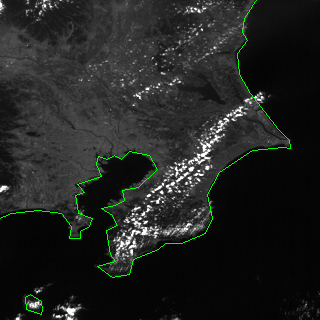
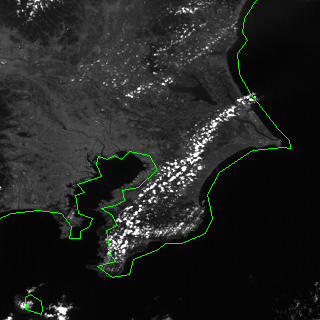
AHI's automatic sun avoidance function for the spring and autumn eclipse periods
Around midnight during the spring and autumn eclipse periods, sunlight can enter the AHI sensor when the sun and the earth occasionally lie in an approximate line with the satellite. To avoid this, the AHI has a function by which part of the observation area can be automatically skipped based on prediction of the sun's position and potential problem areas (Figure 2).
The skipped area is filled with missing values from HSD Data block 12. HSD Basic information block 1 also contains solar eclipse flag.
Each observation were automatically skipped based on solar interference prediction.
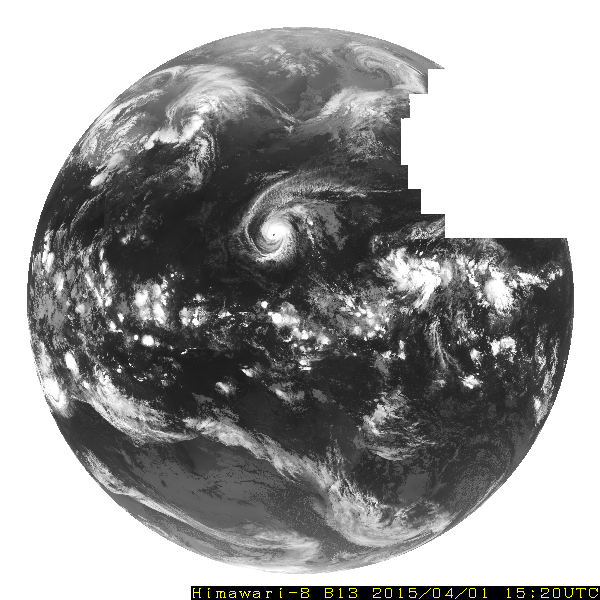
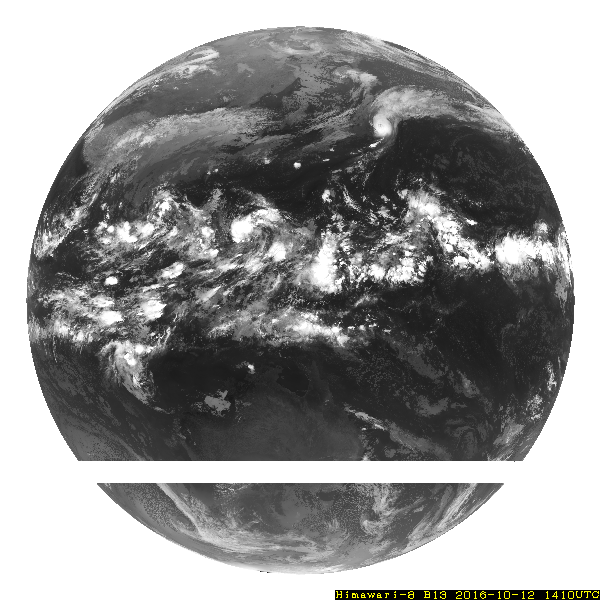
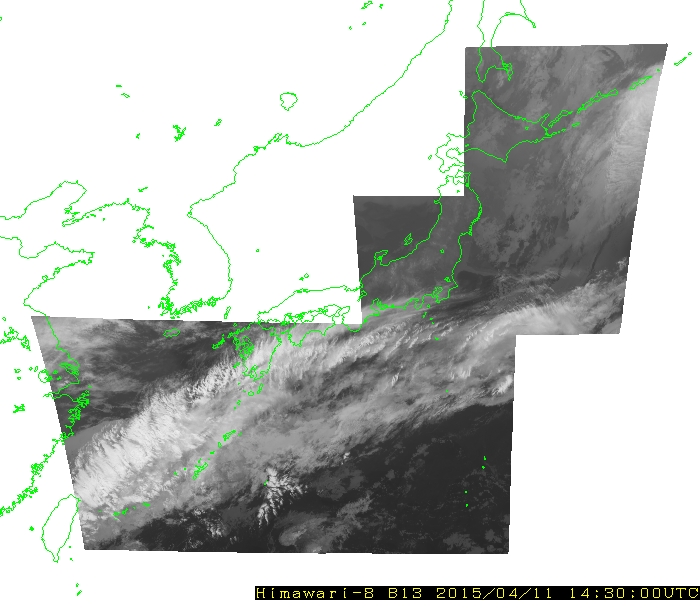
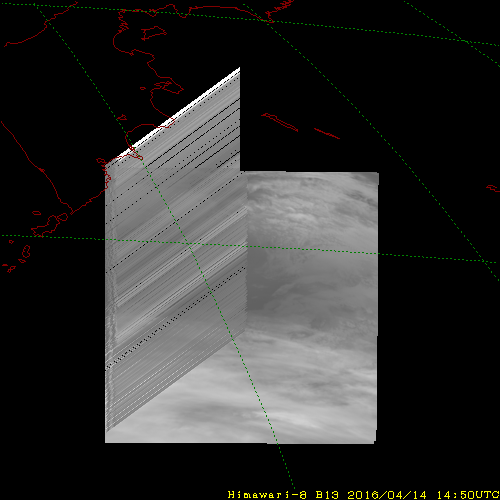
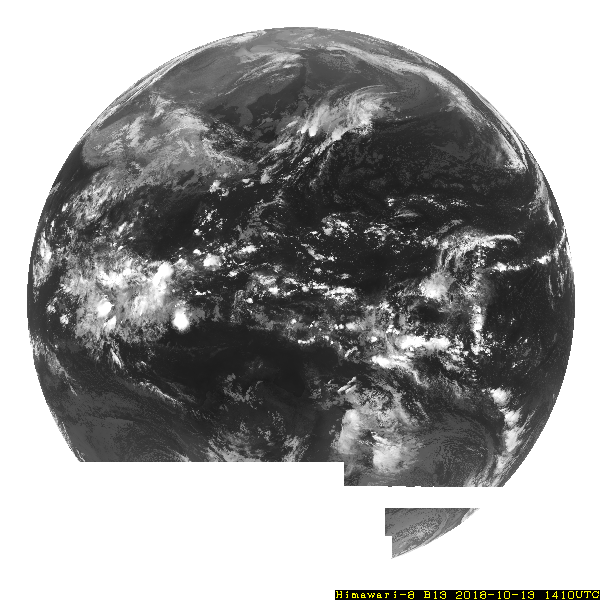
Stray light
Stray light (a term given to reflected or diffused sunlight entering the sensor) can be seen in AHI images when the sun and the earth occasionally lie in an approximate line with the satellite during the spring and autumn eclipse periods. Figure 3 shows full-disk images captured at midnight during the spring eclipse. Stray light can be seen in bands 1 to 9.
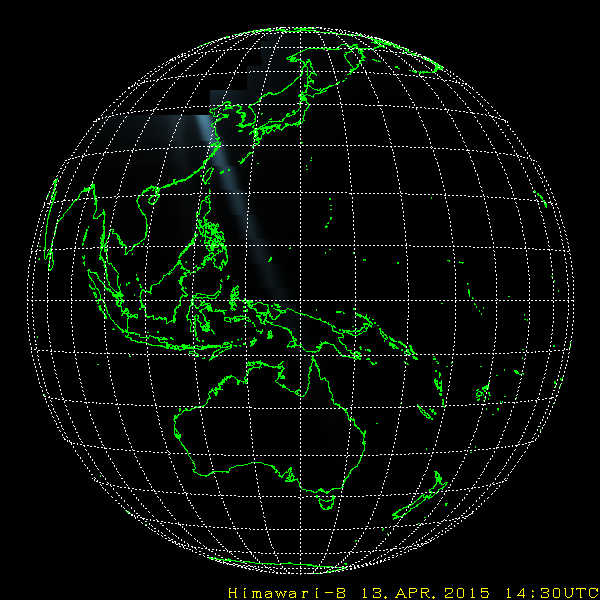
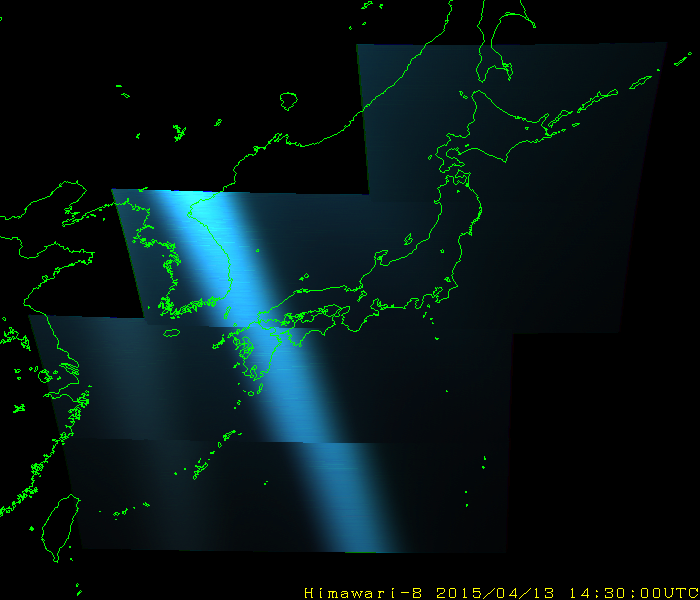
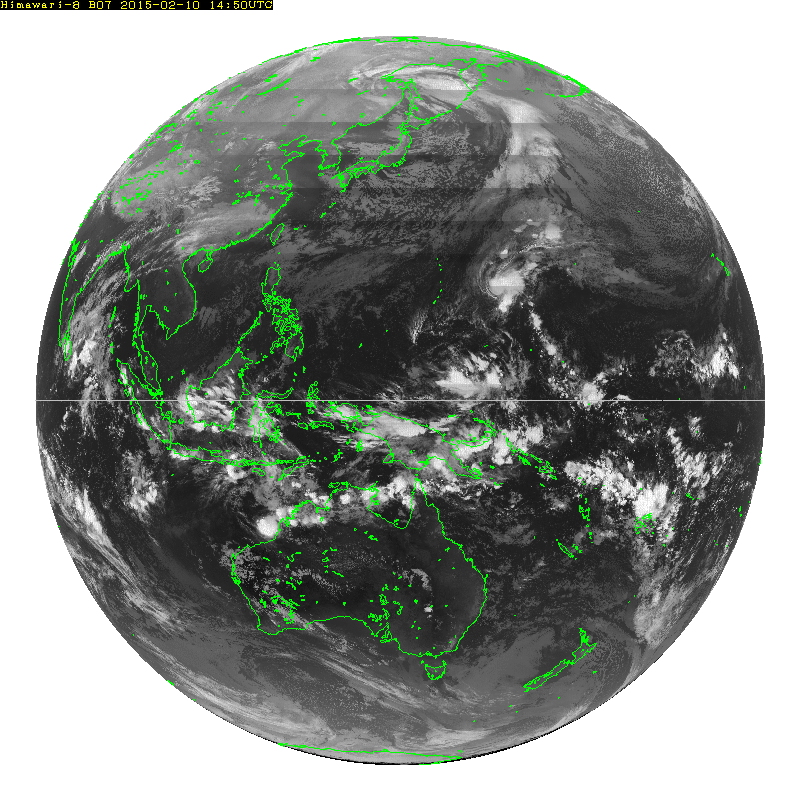
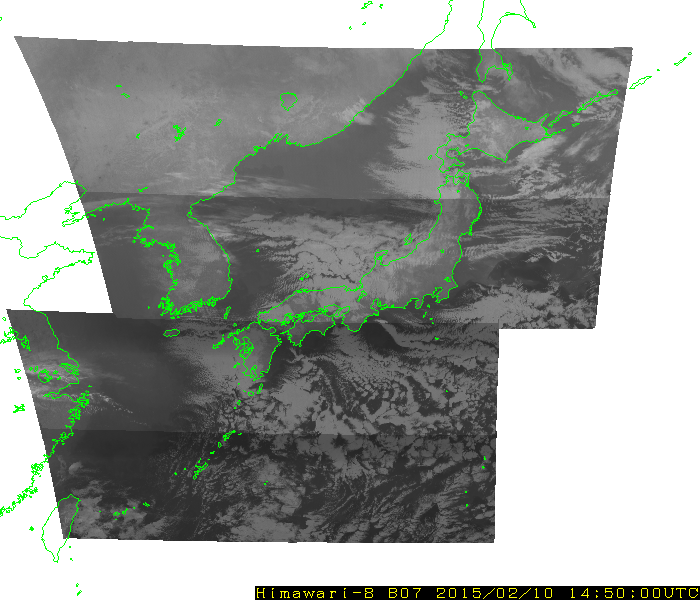
Image quality degradation due to lunar interference
Anomalous radiometric calibration can occur with certain positional relations among the earth, the satellite and the moon. This results in a degradation of image quality (as seen with the horizontal stripes in Figure 4). Information on lunar interference is provided in HSD Basic information block 1.

Striping
AHI detector sensitivity differences can cause horizontal stripes (Figure 5).

Coherent noise and reduction processing
The downlinked AHI imagery contains some coherent noise due to the operating configuration. It is most significant in band 7 but is present to some degree in all bands. This results in north-south stripes in low radiance portions of the images, such as cloud-free ocean in the visible and near-infrared bands, deep convective cloud in infrared bands and deep space in all bands. A noise reduction process was applied to a number of bands in which noise is efficiently reduced (Band 1, 2, 4, 5, 6, 7, 10, 11, 12, 13, 14 and 15 for Himawari-8, and Band 1 to 8 and 10 to 16 for Himawari-9). The algorithm corrects periodic noise identified in deep-space observation data using a Fourier transform. It may not be possible to apply the reduction process to the data due to the operating configurations such as the condition of the deep-space observation. (Figure 6).
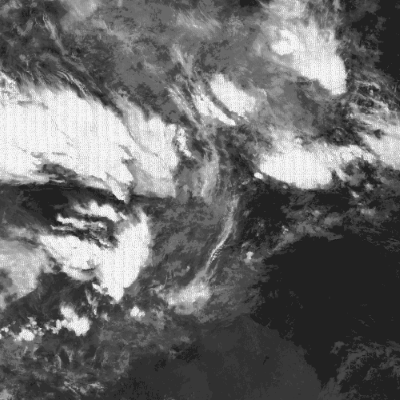
Band 7 Full Disk observation started at 19:30 UTC on 29 December 2022.